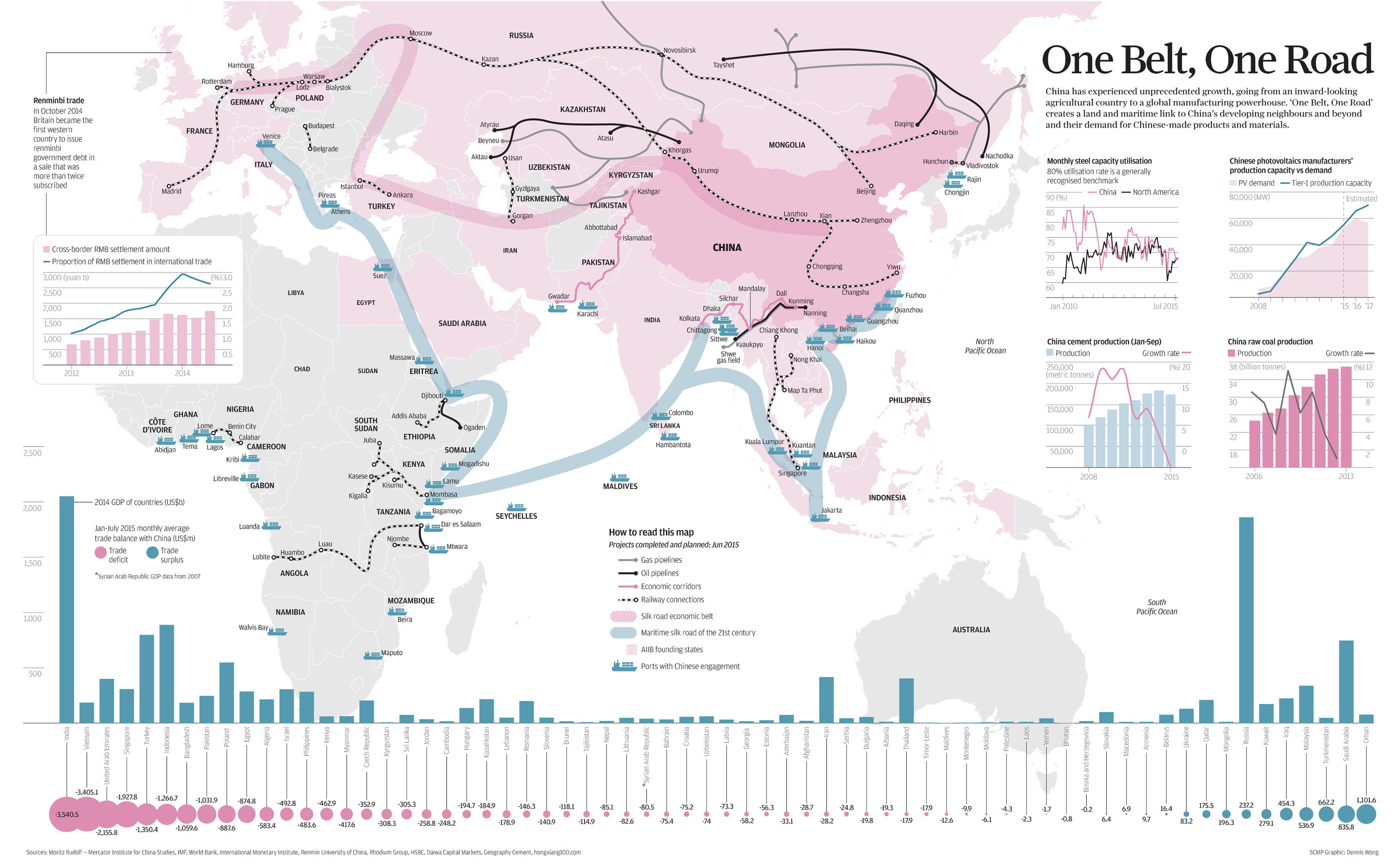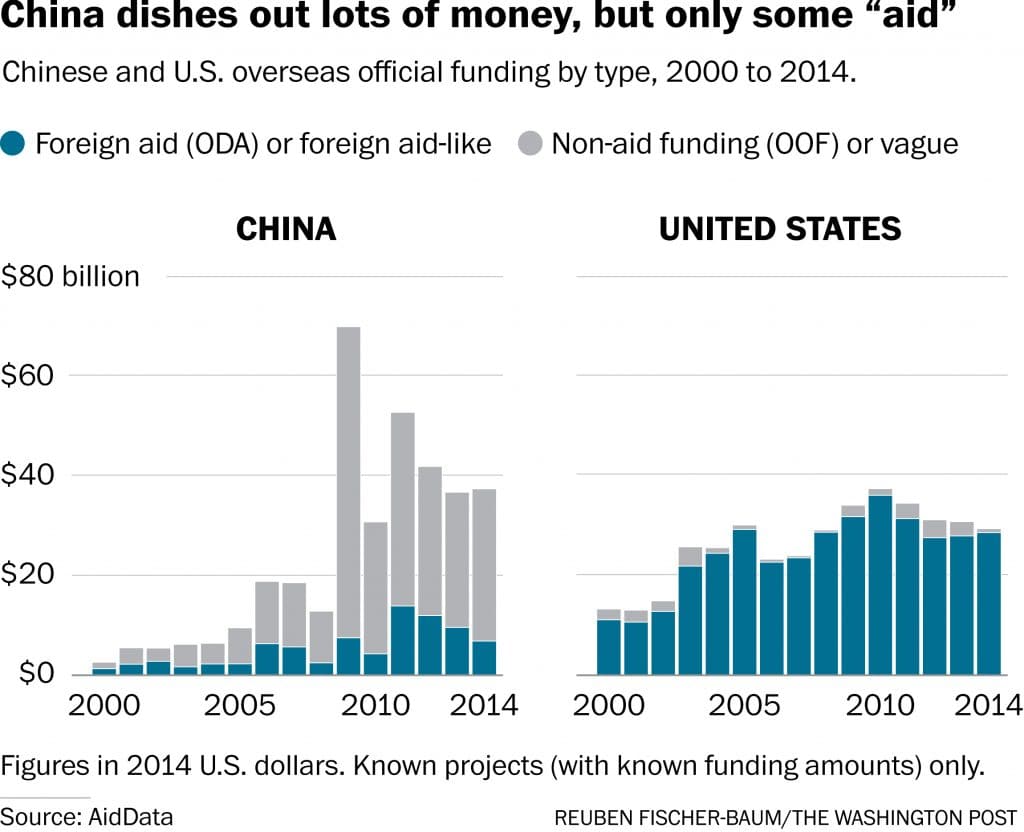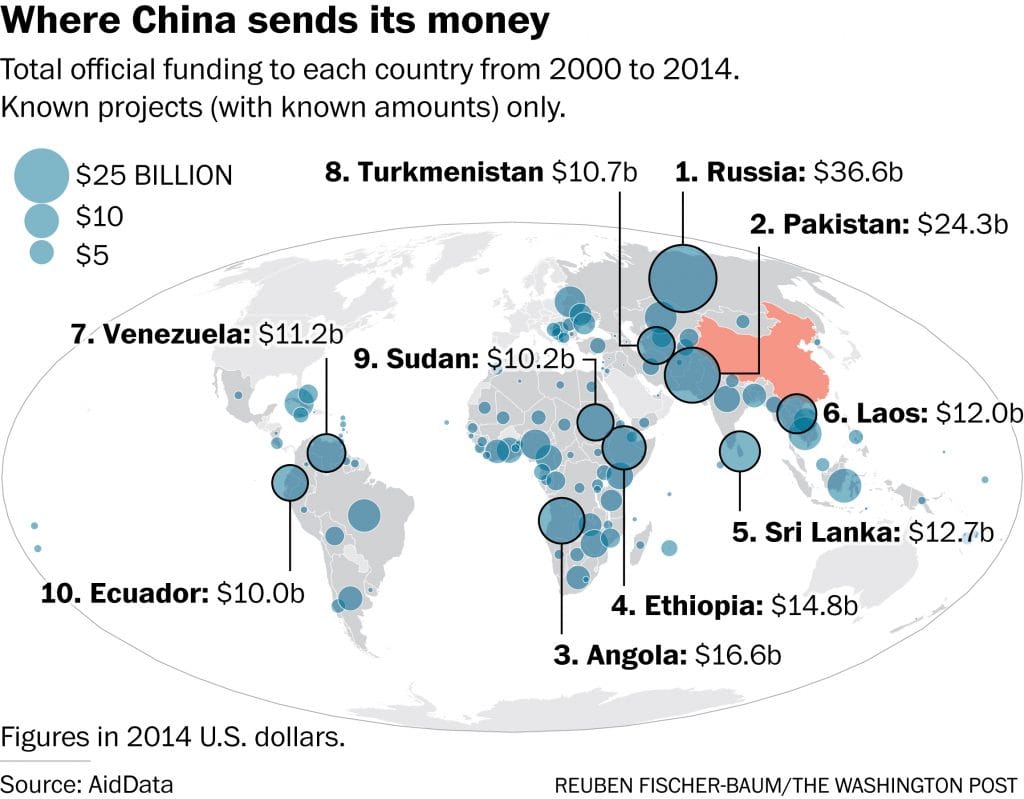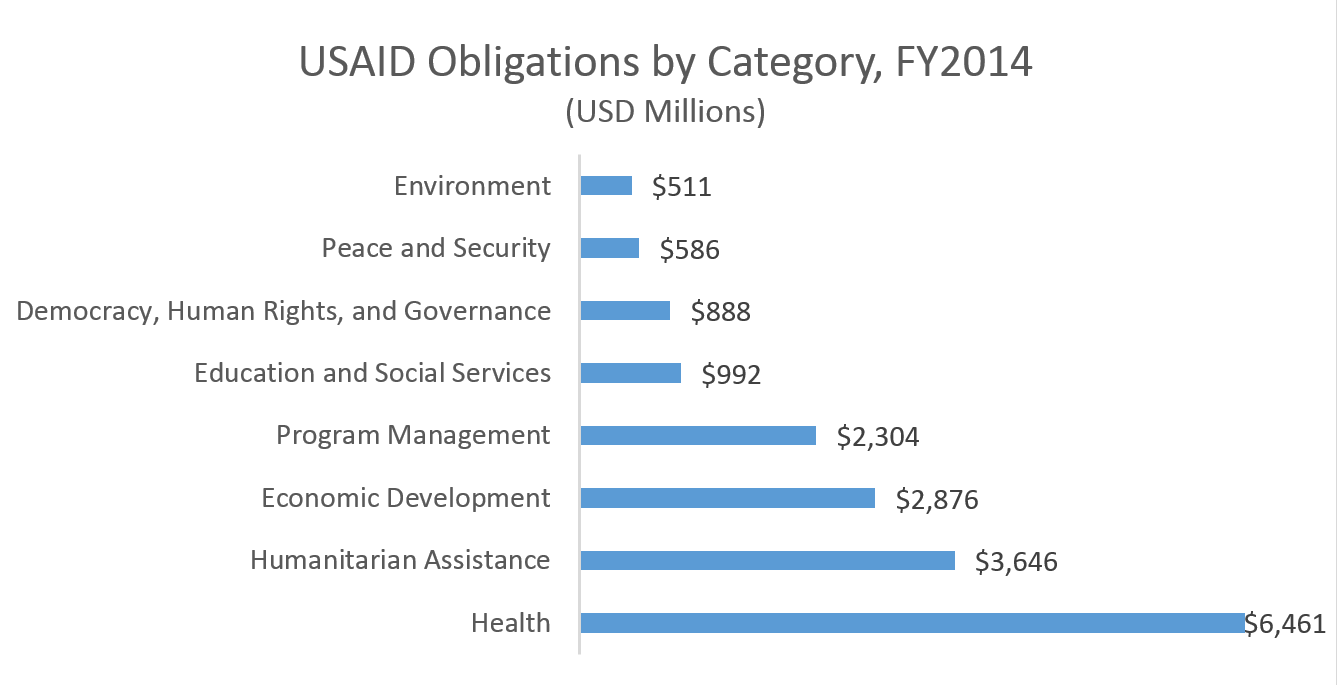Submitted by Taps Coogan on the 11th of October 2017 to The Sounding Line.
Enjoy The Sounding Line? Click here to subscribe for free.
Much has been made of China’s growing oversees investments. We recently discussed one element of China’s foreign funding, the ‘One Belt, One Road’ iniative (aka the New Silk Road), noting:
“China has been building a belt of railways, highways, pipelines, power plants, and ports throughout central Asia and around the world… an enormous portion of China’s imports and exports currently pass through the South and East China Seas, both of which are vulnerable to blockading by the US or other regional powers. While the New Silk Road is billed as a collaborative economic and development project, it has as much to do with China’s strategic security as anything else.”

While certain official ‘One Belt, One Road’ projects have been well documented, China’s total foreign funding encompasses much more than these flagship projects. Remarkably, the totality of Chinese foreign funding, which includes a combination of formal aid funding (generally grant money) and non-aid funding (loans), has been a closely guarded secret. As the Washington Post notes:
“Try to find in-depth data about these projects, however, and you are mostly out of luck. China treats its foreign assistance budget like a state secret, refusing to work with international bodies that try to coordinate and quantify foreign development funding. In part due to this paucity of information, a reputation has spread among Western critics that China is a “rogue donor” — one that lavishes illiberal regimes with cash to plunder raw materials for its own growth.”
Fortunately, some of the uncertainty surrounding China’s foreign funding has now been removed due to a multi-year research initiative by AidData, a research lab at the College of William & Mary. As the Washington Post notes:
“An ambitious new research project released this week challenges that assumption by producing the first-ever global data set on Chinese overseas development spending between 2000 and 2014. Brad Parks, the executive director of AidData, a research lab at the College of William & Mary, said it took five years for a team of nearly 100 scholars and research assistants from all over the world to piece together data from 15,000 distinct information sources covering 4,300 projects in 140 different countries and territories.”
The results of this work are shown in the charts below. The punch line is this: China has overtaken the US to become the largest source of foreign funding in the world and is directing funds to virtually every economy outside Europe and North America.


As the charts above show, while China’s total annual funding is now higher than the US’s, the large majority of Chinese funding is “non-aid” funding. On the other hand, the overwhelming majority of US foreign funds are “aid” funding and thus the US still maintains a wide lead in this domain. Some media outlets are reporting that China has overtaken the US in foreign aid funding. This is not true.
As the following chart from the Central for Global Development shows, the largest portion of US foreign aid goes towards Health and Humanitarian Assistance. Much of the Chinese funds are going into commercial interest such as oil companies (particularly in Russia), farm development, housing, and infrastructure.

Because Chinese foreign funding is mostly directed for the purpose of profit making, it may prove to be more enduring for China and its recipients. With the US running perennial budget deficits and having amassed over $20 trillion in national debt, foreign funding which does not explicitly generate economic benefits for the US is unsustainable economically and politically. Borrowing money in order to gift it to foreign countries may be ‘humanitarian’ but it is not prudent. The real capability of the US to aid the development of other countries lies not in money directed by an indebted Federal Government but in America’s enormous private sector and in its capacity for economic cooperation. If the US intends to counter rising Chinese influence around the world and if it intends to continue to provide much needed aid and development abroad, it is going to have to find new ways of leveraging the private sector to do so. In the end it comes down to global influence:
“AidData found African countries that vote with China at the United Nations get an average bump of 86 percent in aid from Beijing.”
Would you like to be notified when we publish a new article on The Sounding Line? Click here to subscribe for free.

